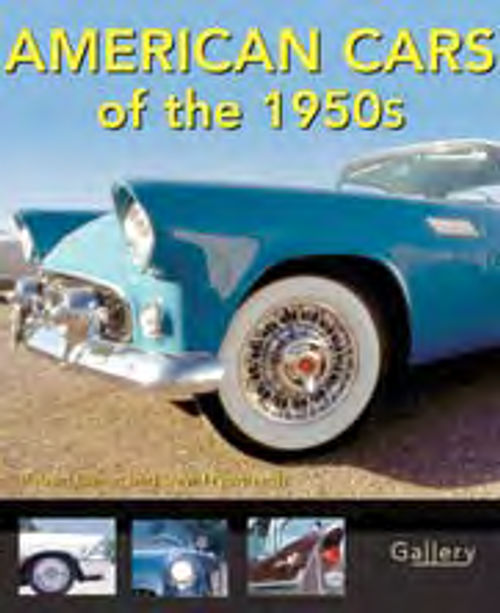Book Review:American Cars of the 1950s
It's the image of a better, simpler time. a suburban and prosperous America complete with a white picket fence. But this image of the 1950s isn’t complete without a big-bodied, chrome adorned, American-made automobile in the front drive.

Being born three decades after this golden age of the automobile, I still hold a certain appreciation for the iconic mainstay of ’50s cars in American culture. Modern movies from “Back to the Future” to “Walk the Line” use the era’s cars to drive home their retro setting. In 1998, “Pleasantville” featured a wide array of classic American cars like the ’52 Buick Roadmaster Convertible that gave it the unmistakable feel of a ’50s sitcom. The point being, these classic cars will forever symbolize an era even for those of us who grew up with Nintendo and synthesizer pop as opposed to lover’s lane and old-fashioned rock ‘n’ roll.
“American Cars of the 1950s” is Robert Genat and David Newhardt’s collaborative effort to document the evolution of these great American cars that embody the essence of a decade of optimism.
Divided into three major sections, the book first takes a look at the Big Three automakers individually, showcasing their most famous makes and models. Though Ford, Chrysler and GM offered different styles and options in terms of the automobiles they provided, the trend was clear: bigger is better. Every year the cars grew and were decorated more lavishly, culminating in models like the ’59 Cadillac El Dorado. With its 130-inch wheelbase, it measured 225 inches from end to end.
Body length and wheelbase weren’t the only things that grew either. Tailfins, which were inspired by the P-38 fighter plane and got their start in the late ’40s, were mere bumps in the early years of the next decade.
But by the end of the ’50s they had grown to a point where they were among the most recognizable styling cues of the decade, and to this day the towering fins of the ’57 Chevy and ’59 Cadillac are seen as icons of their time.
Accompanying each section is a separate photo gallery. Though not all of the cars discussed here can be shown in this relatively small book, every car that is pictured has a two-page spread with a wide variety of exterior, three-quarters and interior shots, along with some additional information about the vehicle in the captions.
From GM, Ford and Chrysler sedans, the book shifts gears to focus on domestic sports cars with the spotlight mainly on the Corvette and Thunderbird.
After World War II, veterans returned from overseas spreading the word about the small, fast European cars that would inspire the emergence of the American sports car.
But this didn’t happen overnight. In fact, many of the first American sports cars failed. The authors explore how only Chevy and Ford had the dedication, the money...and the rivalry to make the American sports car possible.
The book finishes with a section about ’50s orphan cars, and the downfall of their respective “mother” car manufacturers. Featured here are Crosley, Hudson, Studebaker and Packard among others. Though the Big Three had “a lock on the U.S. automotive market,” these small automakers gave American car buyers even more options, often in the form of smaller and cheaper cars. Some of these manufacturers did pretty well for themselves, but as the economy started to wane at the end of the decade, many were forced to close their doors forever.
The trend throughout the book is to present a brief textual description of the cars followed by a big chunk of photos at the end of the section. Unfortunately, this causes a lot of flipping back and forth in order to see the pictures of the cars being described in the text.
Nevertheless, Genat and Newhardt pack a lot of information into their briefs on the cars, and the most famous or noteworthy cars are documented from every angle. With plenty of pictures and bios, “American Cars of the 1950s” is a solid introduction for those, like me, who might not know much about the cars of the era. Or, for someone who owns a ’50s car or may have owned one when it was new, it is a nostalgic look back on some of the most famous and recognizable vehicles of the 20th century
















